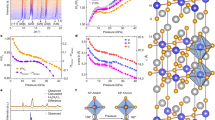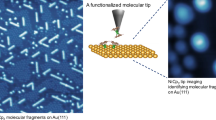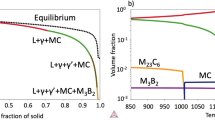Abstract
IT has been shown by one of us1 that, at ordinary temperatures, the structure of nickel oxide is slightly deformed from face-centred cubic symmetry. Later work2 proved that at − 180° C. an increase in the rhombohedral deformation occurs. On the other hand, it was found that the departure from cubic symmetry vanishes at a temperature of about 200° C.
This is a preview of subscription content, access via your institution
Access options
Subscribe to this journal
Receive 51 print issues and online access
$199.00 per year
only $3.90 per issue
Buy this article
- Purchase on SpringerLink
- Instant access to full article PDF
Prices may be subject to local taxes which are calculated during checkout
Similar content being viewed by others
References
Rooksby, H. P., Nature, 152, 304 (1943).
Rooksby, H. P., Acta Crystallographica, 1, 226 (1948).
Lonsdale, K., and Smith, H., J. Sci. Instr., 18, 133 (1941).
Author information
Authors and Affiliations
Rights and permissions
About this article
Cite this article
TOMBS, N., ROOKSBY, H. Structure of Monoxides of some Transition Elements at Low Temperatures. Nature 165, 442–443 (1950). https://doi.org/10.1038/165442b0
Issue date:
DOI: https://doi.org/10.1038/165442b0
This article is cited by
-
Pressure dependence of Néel transition in (Mg,Fe)O
Physics and Chemistry of Minerals (2014)
-
In situ high-temperature electron microscopy of 3DOM cobalt, iron oxide, and nickel
Journal of Materials Science (2008)
-
The Fe-O (Iron-Oxygen) System
Journal of Phase Equilibria (1991)
-
Ultrasonic tests for phase separation in the vitreous systems Co-P-O and H-P-O
Journal of Materials Science (1985)



